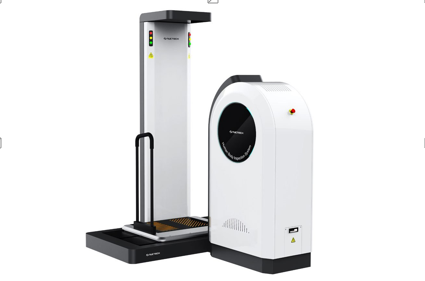How smart tech is transforming healthcare and patient care

The world of healthcare is undergoing a transformation, and it’s all thanks to smart technology. From AI-driven diagnostics to wearable health monitors, the way we visit doctors and manage our health is shifting. Telemedicine has become a staple, and even surgeries are getting a futuristic upgrade with robotics. Let’s dive into how these advancements are reshaping the healthcare landscape.
Ai in diagnosing diseases
Artificial Intelligence (AI) is no longer the stuff of science fiction; it’s here and making waves in the medical field. Imagine a computer system that can sift through thousands of medical records, images, and data points in seconds to pinpoint a diagnosis. That’s exactly what AI does. It’s like having a super-smart assistant who never tires, never gets bored, and is always spot-on with their findings.
One of the most exciting uses of AI in healthcare is in imaging. Radiologists now have AI tools that help them detect anomalies in X-rays, MRIs, and CT scans with remarkable accuracy. These tools can highlight areas of concern that might be missed by the human eye, leading to earlier detection of diseases like cancer. And early detection? That’s a game-changer.
But it’s not just imaging. AI algorithms are being developed to predict outbreaks of diseases by analyzing patterns in data from various sources like social media, travel records, and public health reports. This predictive capability could be crucial in preventing epidemics or at least mitigating their impact. It’s a bit like having a crystal ball but based on solid data rather than mystical powers.
Wearable tech for health monitoring
Remember those clunky pedometers from years ago? Well, wearable tech has come a long way since then. Today’s smartwatches and fitness trackers do more than count steps; they’re mini health hubs strapped to your wrist. They monitor heart rates, sleep patterns, oxygen levels, and even stress indicators.
For individuals with chronic conditions like diabetes or heart disease, these devices can be lifesavers—literally. Continuous glucose monitors send real-time blood sugar readings to your phone, alerting you before things get out of hand. Similarly, wearables that track heart rhythms can notify users of irregular patterns that might signify atrial fibrillation or other cardiac issues.
And it’s not just about tracking; it’s about acting on that data.Many devices now come with companion apps that provide personalized health tips based on your readings. Didn’t sleep well last night? The app might suggest winding down with some light yoga or meditation before bed tonight. It’s like having a tiny personal trainer and doctor rolled into one. An innovation that further extends this concept is the Human body scanner, providing comprehensive health insights.
Telemedicine is here to stay
Gone are the days when seeing a doctor meant sitting in a waiting room full of coughing strangers. With telemedicine, you can have a consultation from the comfort of your own home. All you need is an internet connection and a device with a camera—your phone, tablet, or computer will do just fine.
Telemedicine has been around for a while, but it really took off during the pandemic when in-person visits became risky. Its benefits became clear very quickly: it saves time, reduces exposure to illnesses, and makes healthcare accessible to those living in remote areas. Plus, let’s be honest—it’s much easier to fit a 15-minute video call into a busy schedule than an hour-long trek to the doctor’s office.
Doctors can diagnose minor ailments, offer medical advice, and even prescribe medications via teleconsultations. Some platforms also integrate with wearable devices so doctors can get real-time health data during the consultation. This means they can make more informed decisions without needing you to present in person.
See also: Pinterest Tech Blog: What’S Trending on Pinterest Tech Blog
Robotics in the operating room
When it comes to surgery, precision is everything. And that’s where robotics come into play. Robotic surgery systems allow surgeons to perform complex procedures with greater accuracy than ever before. These robots aren’t exactly like the ones from sci-fi movies—they’re more like highly advanced tools controlled by skilled surgeons.
One well-known system is the da Vinci Surgical System. It translates the surgeon’s hand movements into smaller, precise movements of tiny instruments inside the patient’s body. This minimally invasive approach means smaller incisions, less pain post-surgery, and quicker recovery times for patients.
Robotics are also being used for tasks like suturing blood vessels or removing tumors with extreme precision. Surgeons can even perform remote surgeries using robotic systems if they have access to high-speed internet connections and specialized equipment on both ends. Imagine a top-notch surgeon in New York operating on a patient in Tokyo—all without leaving their own city! Companies like InstechNL are pioneering these cutting-edge technologies, making futuristic healthcare a present-day reality.
Incorporating robotics into surgery isn’t about replacing surgeons; it’s about augmenting their capabilities to achieve better outcomes for patients—a partnership between human skill and technological precision.
The integration of smart technology into healthcare promises not only to make treatments more effective but also more accessible and convenient for everyone involved—from doctors to patients. We are truly entering an era where technology doesn’t just assist in healthcare; it fundamentally transforms it for the better.




